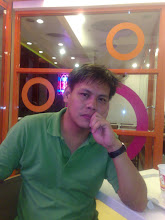By Kit Bagaipo, Chito A. Fuentes
Inquirer Visayas
TAGBILARAN CITY, Bohol—To gain recognition for its century-old raffia weaving tradition, the town of Inabanga, once the cradle of the Philippines’ longest revolt against the Spaniards, will soon roll out the longest handwoven raffia and secure its claim as the home of highly skilled and artistic raffia weavers.
Locally known as “buli,” raffia weaving was introduced to Inabanga in the early 1800s during the time of the revolutionary Francisco Dagohoy. The woven fabrics were then used as sleeping mats and guerrilla uniforms.
On May 19, Inabanga launched its bid for the world’s longest continuous woven raffia fabric—a project that costs P300,000. The completion of the 1.6-kilometer product is expected by June 29, a day before its annual feast, Mayor Jose Jono Jumamoy said.
Anatolio Hugo, 35, said the project unofficially began on February 9 when he started weaving the first three meters. The raffia spool now laid out at the gym is nearly 200 meters long.
Jumamoy said he felt confident that the weavers would beat the deadline although he acknowledged that the weaving had slowed down a bit because tourists and visitors had been allowed to try their hand at weaving.
Inabanga launched the project because the industry could help provide livelihood to its residents. With a population of 40,000, it is primarily agricultural, with its coastal and island villages dependent on fishing.
The launching also highlighted impressive designs, showing the creativity and unique craftsmanship of the weavers. Home and lifestyle products, such as personal accessories, place mats, table runners, pillow cases, decorative rolls, handbags, and fashion accessories were made from raffia.
Governor Erico Aumentado, Vice Governor Julius Caesar Herrera, Board Members Ma. Fe Lejos, Ester Corazon Galbreath, and Jumamoy attended the opening ceremony.
“Inabanga intends to inform the consumer sector—institutional buyers, exporters, and subcontractors—that we have the production capacity and variety of product lines of excellent quality,” Jumamoy said.
Last year, the town presented a fashion show with models sporting raffia fabrics.
Inabanga has been known as the loom weaving capital of Bohol as its inhabitants became proficient in raffia weaving with buli palms, which are abundant.
Subscribe to:
Post Comments (Atom)

No comments:
Post a Comment